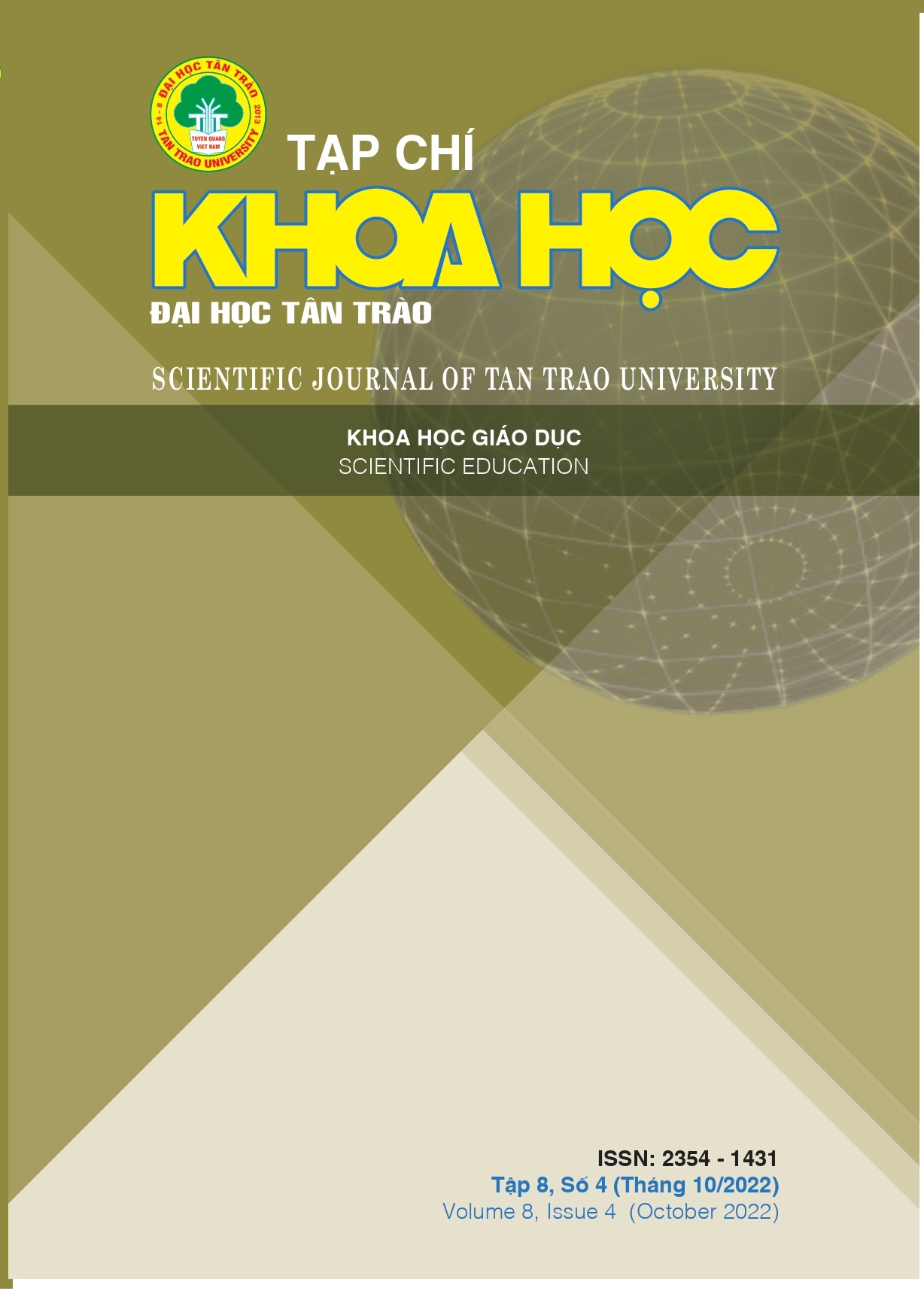ĐỐI NGẪU LANGRANGE CHO BÀI TOÁN CỰC TRỊ CÓ RÀNG BUỘC TỔNG QUÁT
DOI:
https://doi.org/10.51453/2354-1431/2022/786Từ khóa:
Bài toán cực trị có ràng buộc tổng quát, Điểm cực tiểu toàn cục, Điều kiện tối ưu đủ, Đối ngẫu Langrange, Tập ảnh.Tóm tắt
Bài toán cực trị có ràng buộc tổng quát được xem xét trong bài báo trong đó một nón cho trước có phần trong bằng rỗng sử dụng lý thuyết đối ngẫu Langrange cho một lớp các hàm tách được yếu chính quy trong không gian ảnh (tương ứng không gian ảnh mà ở đó các hàm mục tiêu và ràng buộc chuyển động), một điều kiện tối ưu đủ cho một điểm cực tiểu toàn cục của bài toán liên quan được cung cấp. Thêm nữa được phát biểu cho một lớp các hàm tách được yếu chính quy dưới một dạng tương đương cũng thu được. Kết quả đạt được trong bài báo là mới và được mô tả bằng một ví dụ đối với các kết quả tìm được.
Tải xuống
Tài liệu tham khảo
[1] Nguyễn Xuân Tấn, Nguyễn Bá Minh (2007), Lý thuyết tối ưu không trơn, NXB Đại học Quốc gia Hà Nội, 250 trang.
[2] R.T. Rockafellar (1974), Augmented Lagrange multiplier functions and duality in nonconvex programming, SIAM J. Control, 12: 208-285.
[3] F. H. Clarke (1983), Optimization and Nonsmooth Analysis, Wiley Interscience, New York.
[4] F. Giannessi (2007), On the Theory of Lagrangian Duality. Optim. Lett., 1 (1): 9-20.
[5] A. Moldovan, L. Pellegrini (2009), On Regularity for Constrained Extremum Problems. Part 1: Sufficient Optimality Conditions. J. Optim. Theory Appl. 142: 147-163.
[6] A. Moldovan, L. Pellegrini (2009), On Regularity for Constrained Extremum Problems. Part 2: Necessary Optimality Conditions. J. Optim. Theory Appl. 142: 165-183.
[7] J.M. Borrwein, A. Lewis (1992), Partially-finite convex programming, Part 1: Quasirelative interiors and duality theorey. Math. Programming 57: 15-48.
[8] R.T. Rockafellar (1970), Convex Analysis, Princeton Mathematical Series, No. 28, Princeton University Press, Princeton. NJ.
Tải xuống
Đã Xuất bản
Cách trích dẫn
Số
Chuyên mục
Giấy phép

Tác phẩm này được cấp phép theo Giấy phép Quốc tế Creative Commons Attribution-ShareAlike 4.0 .
Bài báo được xuất bản ở Tạp chí Khoa học Đại học Tân Trào được cấp phép theo giấy phép Ghi công - Chia sẻ tương tự 4.0 Quốc tế (CC BY-SA). Theo đó, các tác giả khác có thể sao chép, chuyển đổi hay phân phối lại các bài báo này với mục đích hợp pháp trên mọi phương tiện, với điều kiện họ trích dẫn tác giả, Tạp chí Khoa học Đại học Tân Trào và đường link đến bản quyền; nêu rõ các thay đổi đã thực hiện và các nghiên cứu đăng lại được tiến hành theo cùng một bản quyền.
Bản quyền bài báo thuộc về các tác giả, không hạn chế số lượng. Tạp chí Khoa học Tân Trào được cấp giấy phép không độc quyền để xuất bản bài báo với tư cách nhà xuất bản nguồn, kèm theo quyền thương mại để in các bài báo cung cấp cho các thư viện và cá nhân.
Mặc dù các điều khoản của giấy phép CC BY-SA không dành cho các tác giả (với tư cách là người giữ bản quyền của bài báo, họ không bị hạn chế về quyền hạn), khi gửi bài tới Tạp chí Khoa học Đại học Tân Trào, tác giả cần đáp ứng quyền của độc giả, và cần cấp quyền cho bên thứ 3 sử dụng bài báo của họ trong phạm vi của giấy phép.






